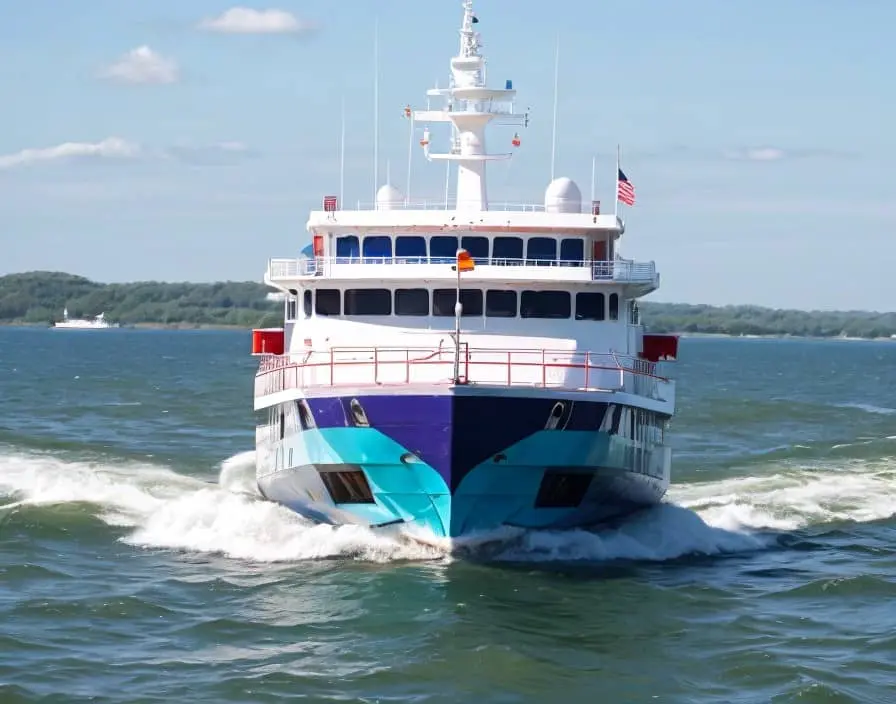According to Victoria Masterson, senior writer at the World Economic Forum, shipping contributes about 3% of global emissions and, much like aviation, the industry is investing in technologies to support decarbonization.
Sweden is set to launch what is being hailed as the world’s first high-speed electric passenger ferry. As the shipping industry works toward decarbonization, could this be a glimpse into its future?
The emergence of the electric ferry
In October, the new electric ferry Candela P-12 will begin a trial service between Stockholm and the island suburb of Ekerö, with plans to launch on New Zealand’s Lake Manapouri for Meridian Energy in 2025. Developed by Swedish electric boat maker Candela, the ferry reportedly consumes 80% less energy than traditional ships and reduces lifetime emissions by 97.5% compared to diesel vessels, according to Forbes.
With a top speed of 30 knots, the P-12 is described as “the world’s first high-speed and long-range electric shuttle ship,” and is said to outpace subway trains, buses, and cars during rush hour. The ferry flies above the water using three carbon fiber wings that extend from the hull, reducing wake and allowing it to travel faster than conventional ferries.
Candela plans to expand globally if the Swedish trial succeeds, citing great potential in cities built around water. The electric vessels market is projected to reach $14.2 billion by 2030, according to Markets and Markets.
What are the potential benefits for the broader shipping industry?
Battery-powered electric boats are a viable option for shorter sea trips in smaller vessels, such as passenger ferries. However, longer routes with larger ships, like those used for cargo shipping, remain out of reach.
“Electrification isn’t a feasible option for deep-sea vessels due to the enormous battery sizes required,” explains Johannah Christensen of the Global Maritime Forum.
Fortunately, it’s not the only green solution under consideration.
Why is it important for the shipping industry to reduce emissions?
International shipping is one of the largest and most challenging sectors to decarbonize. Each year, around 11 billion tonnes of goods are transported by ship between over 150 countries.
Shipping carries about 80% of global trade and is responsible for roughly 3% of global emissions. Experts stress that achieving carbon neutrality and addressing the climate crisis requires eliminating these emissions.
Air pollution from shipping is also believed to contribute to around 60,000 premature deaths annually, particularly in coastal and port regions.
In 2023, the International Maritime Organization (IMO) committed to achieving net-zero emissions in shipping by, or around, 2050, with a goal of adopting zero and near-zero fuels by 2030. This ambition is supported by more than 200 maritime industry leaders through the Call to Action for Shipping Decarbonization, an initiative led by the Global Maritime Forum (GMF) in collaboration with the World Economic Forum and Friends of Ocean Action.
The GMF is also a partner in the First Movers Coalition, an initiative aimed at decarbonizing “hard-to-abate” industries, including shipping, aviation, and trucking.
What decarbonization solutions are available for the shipping industry?
The GMF’s latest report on Zero-Emission Pilots and Demonstration Projects highlights 340 registered initiatives, with a strong focus on ammonia and hydrogen technologies.
The shipping industry is exploring various alternative fuels, including biogas—a renewable fuel made from organic waste—as well as ammonia, methanol, and hydrogen.
For instance, Danish shipping giant Maersk is introducing eight large ocean-going container vessels designed to run on carbon-neutral methanol.
Renewable energy sources such as wind and solar are also being utilized to propel ships. Swedish shipbuilder Wallenius Marine and its partners are working on the “Oceanbird,” a vessel powered by six wing sails.
In the US, Cargill has successfully tested the “Pyxis Ocean,” the world’s first wind-powered ship. Equipped with two large wind sails, the vessel has achieved a daily fuel savings of 11 tonnes, translating to significant emissions reductions, according to Cargill.
In Norway, cruise company Hurtigruten is addressing the high emissions of the cruise ship industry with its plan to develop a solar-powered, zero-emissions cruise ship.
In France, Brittany Ferries is introducing its first hybrid ferry, the Saint-Malo, which can accommodate 1,400 passengers. This vessel is the first of two hybrid ferries set to operate between England and France starting in 2025.
These ferries can be powered by liquefied natural gas (LNG), battery power, or a combination of both. While LNG is a fossil fuel, it is regarded as cleaner and safer than oil-based fuels.
Stena RoRo, the Swedish company constructing the ferries, views hybrid vessels as a crucial step toward future technological advancements, including “green fuels, fuel cells, larger batteries, and solar- or wind-supported propulsion.”
